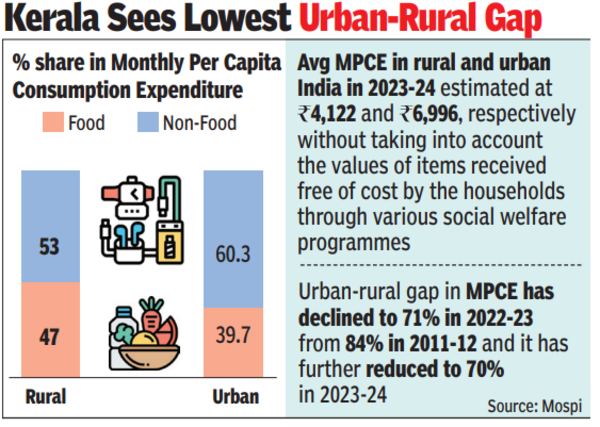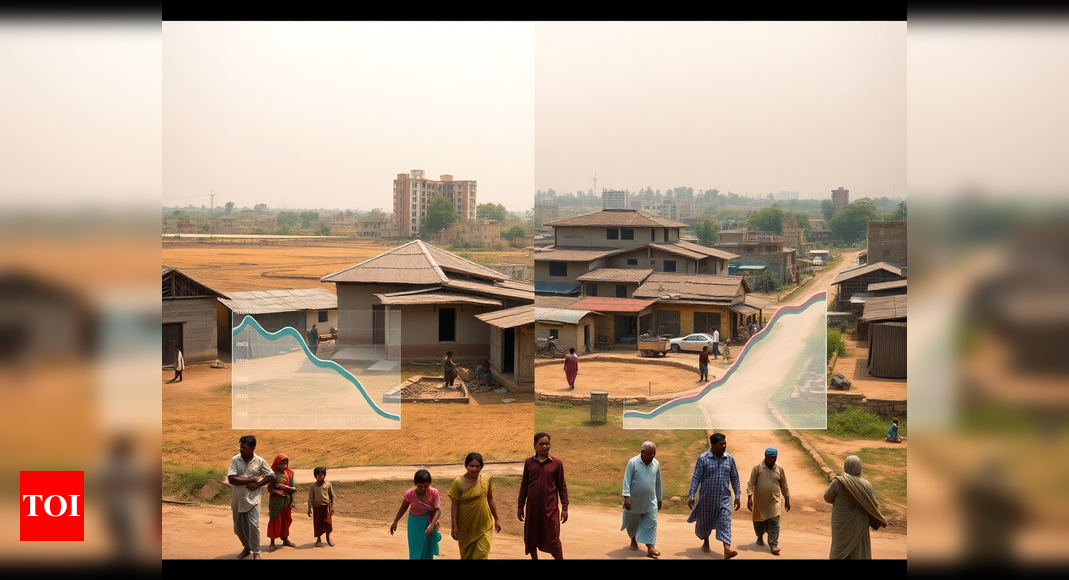NEW DELHI: I inequality of consumptionIn both rural and urban areas, it has decreased by 2023-24 of the previous year for almost 18 main states, the detailed results of the Household Consumer Expenses Survey (HCE) was shown on Thursday.
Previously, an information sheet published in HCE by the Statistics Office last month had shown that Gini’s coefficient, a statistical measure of population inequality, had decreased to 0.24 in 2023-24 of 0.27 in 2022-23 for rural areas already 0.28 in 2023-24 of 0.31 in 2022-23 for urban areas.
The data also showed that there has been an increase in the average monthly expense of per capita consumption (MPCE) for the 18 main states in rural and urban areas in 2023-24. The maximum increase in the average MPCE in rural areas was recorded in Odisha (approximately 14 % between 2022-23), while in urban areas, the maximum increase was witnessed in Punjab (around 13 % since 2022-23). The slightest increase in the average MPCE was in Maharashtra (around 3%) and Karnataka (approximately 5%) in rural and urban areas.
A wide variation in the urban-rural difference was observed in the average in the 18 main states in 2022-23 and 2023-24. There has been a decrease in the urban-rural gap in 11 states in 2023-24 compared to the previous year. The lowest urban-rural gap in 2023-24 was observed in Kerala (around 18%) and the highest in Jharkhand (around 83%), according to the results of the survey.

The data showed that food represented approximately 47% of the average consumption value of rural Indian homes in 2023-24. Among food, the contribution of drinks, refreshments and processed foods have been the highest (9.8%) followed by milk and dairy products (8.4%) and vegetables (6%) in Rural Rural .
Food participation in total consumption of rural household consumption varies from 40.3% (in Kerala) to 53.2% (in Assam). For the urban sector, the proportion of food in consumer spending varies from 36.1% (in Maharashtra) to 48.8% (in Bihar).
The participation of cereals in total spending in rural India varies from 2.6% (in Punjab) to 7.9% (in Jharkhand). In Urban India, participation varies from 2.8% (in Haryana) to 5.8% (in Jharkhand).
The contribution of cereals and cereal substitutes in spending was approximately 5%. Among non -food items, transport (7.59%) was the highest followed by medical products (6.83%), clothing, bedding and footwear (6.63%) and durable (6.48%).





